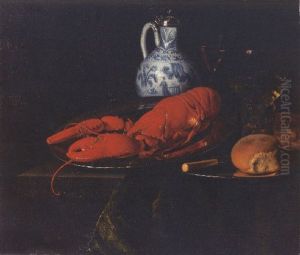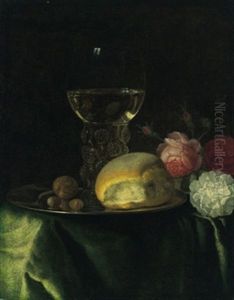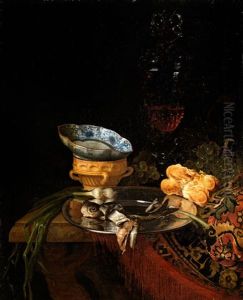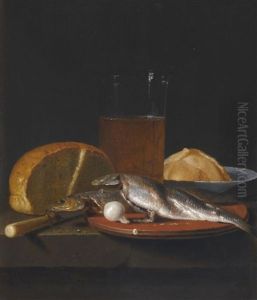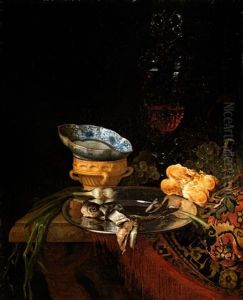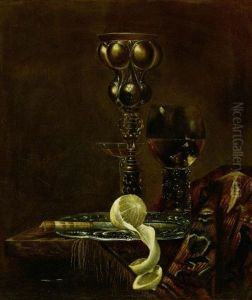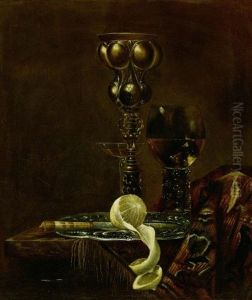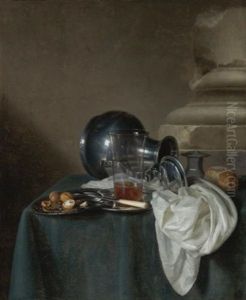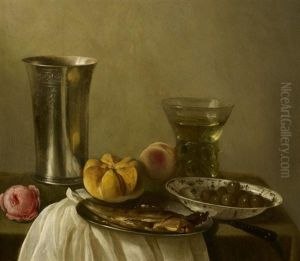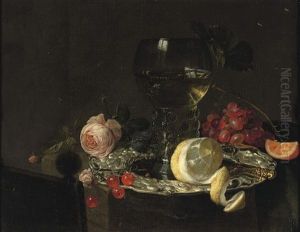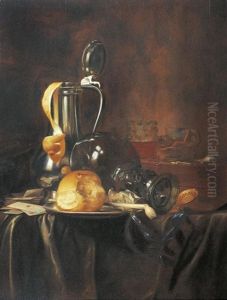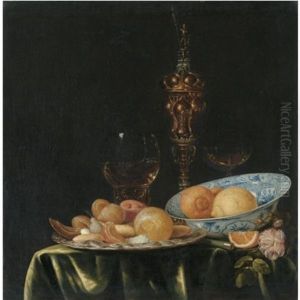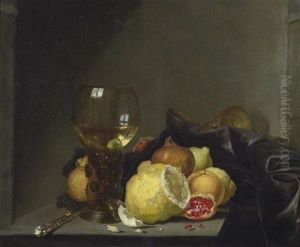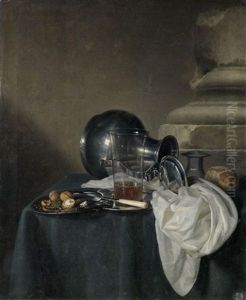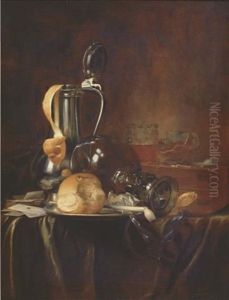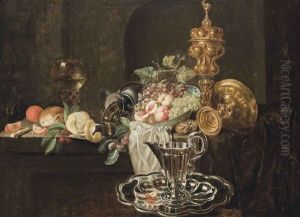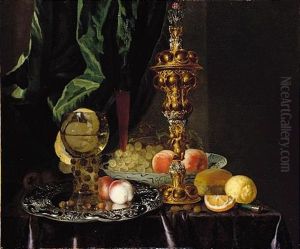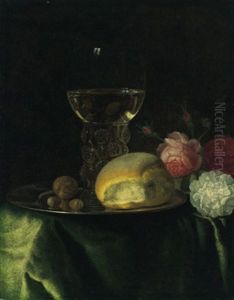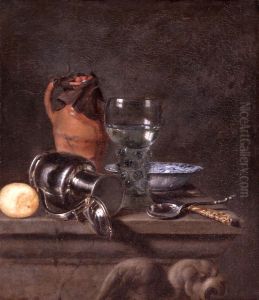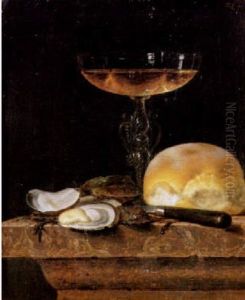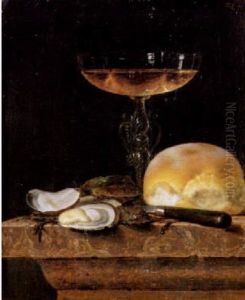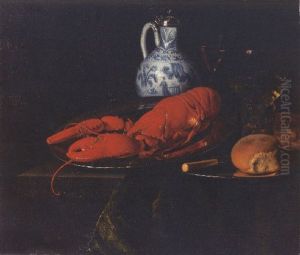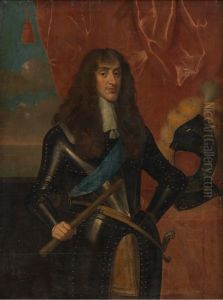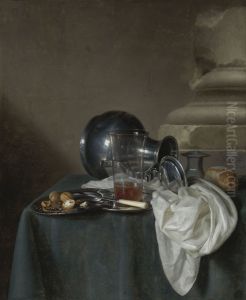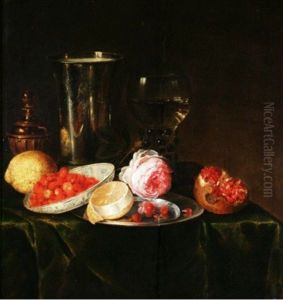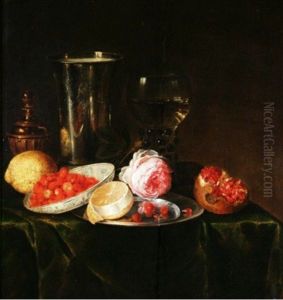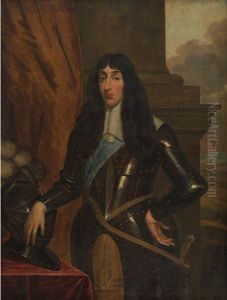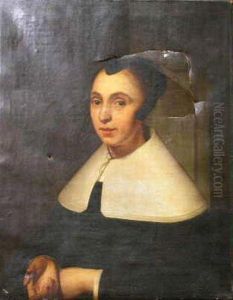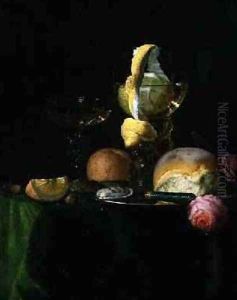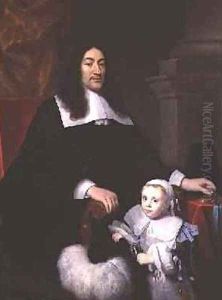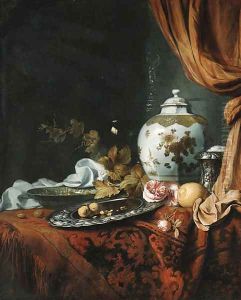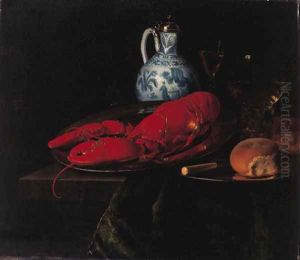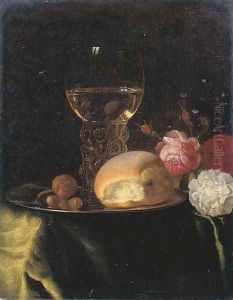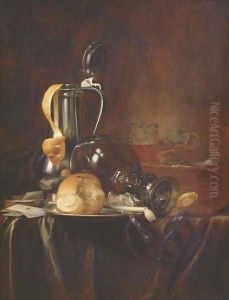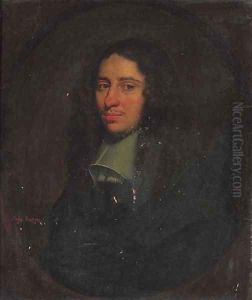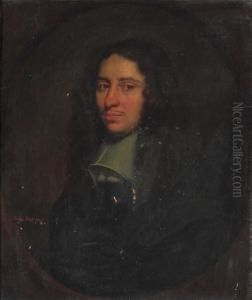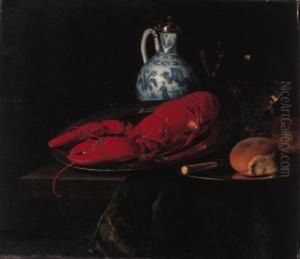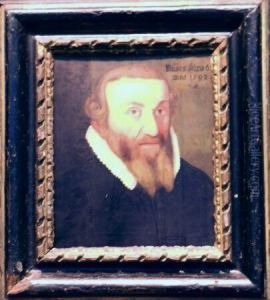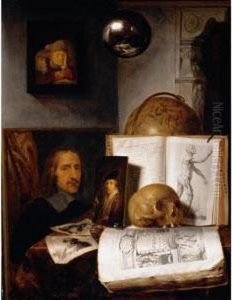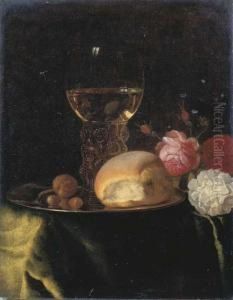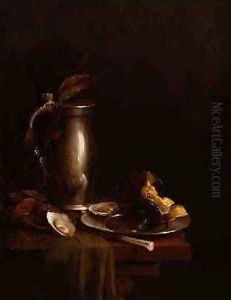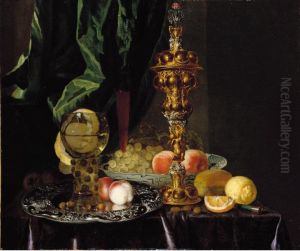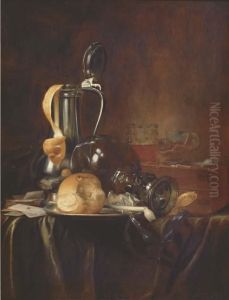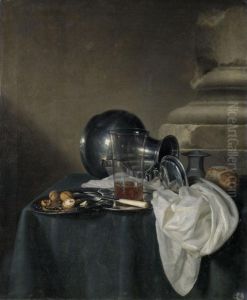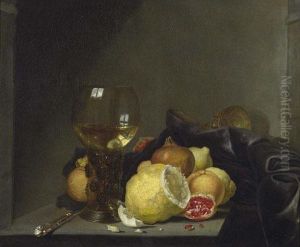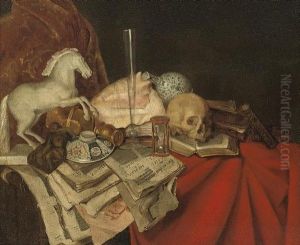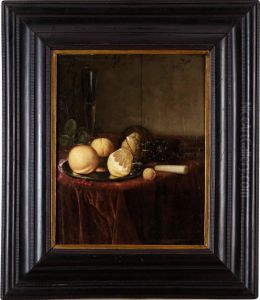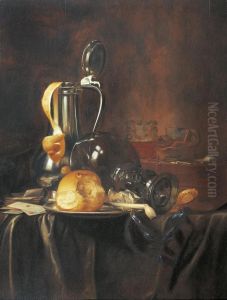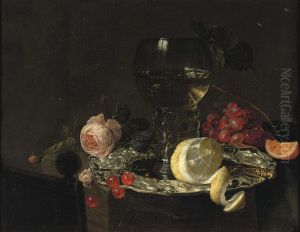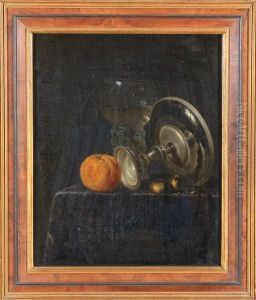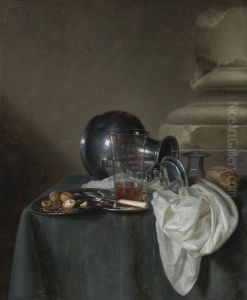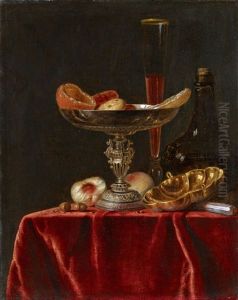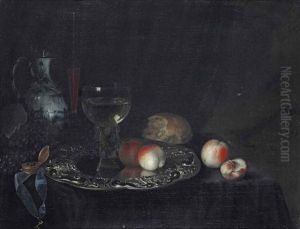Simon Luttichuys Paintings
Simon Luttichuys (also spelled Luttichuijs or Lutichuys) was a Dutch Golden Age painter, known for his still life and portrait paintings. Born in London in 1610 to Dutch parents, Luttichuys moved to Amsterdam with his family while he was still young. His early artistic training and influences remain somewhat obscure, but he is thought to have been a pupil of the portraitist Cornelis van der Voort.
Luttichuys established himself as a successful artist in Amsterdam, where he created many of his works. His still lifes often featured opulent arrangements of food, flowers, and precious objects, demonstrating his keen eye for detail and texture. These paintings are characterized by a refined elegance and a masterful use of light, which was a hallmark of the Dutch still life genre at the time.
In addition to still lifes, Luttichuys was also a respected portraitist and was sought after by the elite of Amsterdam society. His portraits are known for their sophistication and for capturing the dignified presence of his subjects. His style in portraiture was influenced by leading Dutch artists of the era, such as Thomas de Keyser and Frans Hals, and he contributed to the development of the Amsterdam portrait style.
Simon Luttichuys' career also involved a period of time spent in England, where he continued to work on both still lifes and portraits. His work was well received there, and he painted for various English patrons. Upon his return to the Netherlands, he continued his artistic endeavors until his death in Amsterdam in 1661.
Luttichuys' legacy is that of a skilled painter who bridged the traditions of still life and portraiture. His works are held in the collections of various museums and galleries, and they continue to be studied for their contributions to the Dutch Golden Age of painting. While he may not be as widely recognized as some of his contemporaries, his artistry is appreciated by those familiar with the period.
